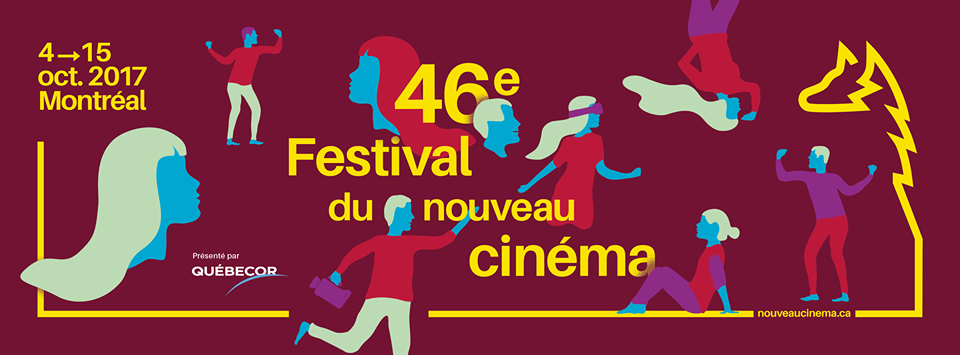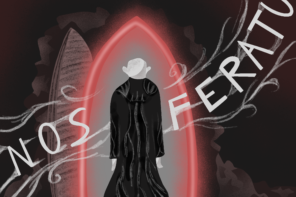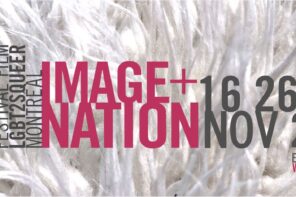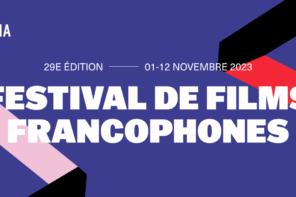The Festival du Nouveau Cinéma ran from October 5th to 15th, and during which films ranging from big-name blockbusters to small-scale indies from new filmmakers were screened and celebrated. From the opening film Blade Runner 2049, with its dystopian cyberpunk production design, to the closing film Loving Vincent, with its hand-painted animation frames that look like the titular artist’s work but move like nothing else, it was a staggering display of vision, ideas, and daring artistic craft. These five films were particularly successful in their craft, and they should be priorities for all film fans going forward.
5 – Wonderstruck (dir. Todd Haynes)
Todd Haynes has quite the task in front of him: to follow up his masterwork, a piece that some (including me) consider to be one of the greatest, if not the greatest film of the current decade. This film, like most films, is no Carol, but it’s decidedly not Carol. Haynes follows up that film’s formal and thematic sensuality with a new film far less ambitious in its themes but far more ambitious in its form. The film crosscuts between two parallel stories: a young boy in 1977 and a young deaf girl in 1927, both unhappy with their lives, decide to abandon their families and run away to New York City to find the parent they’ve never met. A melodramatic tale follows, full of revelations and utterly implausible twists, but the storytelling elevates the story beautifully.
Julianne Moore and Michelle Williams, though having precious few moments onscreen, make terrific impressions as the parental figures of the runaway kids. Millicent Simmonds commands herself well as the young girl, far better than Oakes Fegley (Pete’s Dragon) as the young boy, who unable to pull off trauma, opts for annoyance. Todd Haynes shoots the 1927 scenes to mimic a silent film, which turns out to be an inspired gimmick. It certainly helps that his crosscutting is almost as audacious as Christopher Nolan’s and a bit more elegant, and that the film is drenched in gorgeous cinematography (courtesy Edward Lachman) accompanied by one of the year’s best scores (courtesy Carter Burwell, one of the most underrated working composers). Todd Haynes turns a graceless story into a graceful film through the sheer virtue of his filmmaking. Wonderstruck can’t match Carol’s greatness, but it’s an equal achievement. (3.5/5)
4 – Félicité (dir. Alain Gomis)
Unless it concerns cartoon lions, prawn-like alien invaders, or white people falling in love, the cinema of Africa is largely untapped by the west. Félicité is proudly an African film- it is by, for, and about Africans, as well as universal enough to cross over to the west and surpass our best work. The film follows a singer named Félicité, who, after her son has an accident on his motorbike, must find a way to come up with a sum of money to pay for his surgery. The film takes place in Kinshasa, in the Democratic Republic of the Congo (DRC), and it takes great care to illustrate the setting, revealing the unpleasant environment but never dwelling on it, and always finding something beautiful within it.
Félicité mixes the naturalistic and the abstract with incredible audacity. The film’s first half, regarding Félicité’s quest for the money to pay for her son’s operation, is similar in its naturalist dramatic action to Two Days, One Night–both films involving a woman’s quest to convince her peers to help her out –but after the first half, the film trades its dynamism for a more relaxed, contemplative pace and structure. The performances are measured and self-assured, but sometimes a moment of melodrama passes through organically, especially during the first half, and rather than sticking out, they deepen the drama further. But the film’s greatest flourish of expressionism comes with the music: sometimes, while Félicité sings in her club, the film’s story stops in its tracks and indulges in a relaxed ballet of montage and performance from the audience members. Not to mention the brilliant sound collage over a black screen that begins the film, or the lovely periodic interruptions from the Kinshasa Philharmonic Orchestra that add a layer of grandeur to the small-scale story. Félicité is the type of film that ought to be made more often, and everywhere. (4/5)
3 – Visages, Villages (dir. Agnes Varda)
Two artists go on a road trip, setting off to visit the small towns of France in a van with a polaroid printed on the side. One of them is JR, a French graffiti artist who never takes off his sunglasses. The other is Agnes Varda, an octogenarian veteran of the French New Wave, whose eyesight isn’t great. Naturally, they bring along a camera so that they can both see a little bit clearer. They interview the characters they come across, get their stories, and then they are moved to print them out from the side of the van and plaster them on the gorgeous French buildings, giving permanence to lives that sadly don’t have any. All this could be inconsequential, flighty or even unbearably twee if done in the wrong hands. It’s a good thing that it’s in the hands of Agnes Varda, the world’s greatest-ever documentary filmmaker.
With her patient camera, montage, and above all else her blindsiding earnestness, Varda transforms Visages Villages into something much more powerful and moving than we might anticipate. The stories on display sketch a portrait of France that’s both universal and specific, as she travels from mining towns to salt factories to vagrants to abandoned villages. The film’s greatest portrait, done on shipping containers at Le Havre (France’s largest port) regards not the dock workers but their wives, who are seldom given portraits themselves. An ending confrontation with Jean-Luc Godard threatens to intrude upon the delight – as Godard often does, frankly – but the actual ending is simply perfect. If this ends up being Varda’s swan song, it will be unexpectedly perfect. Good thing then, that she’s got 50 years of some of the greatest French films ever for us to go back and take an eyeful of. (4/5)
2 – Claire’s Camera (dir. Hong Sang Soo)
Do North Americans know who Hong Sang Soo is? In the modern era, Hollywood has exported the quirky action of Park Chan Wook (Stoker) and the less-than-subtle social allegories of Bong Joon Ho (Snowpiercer, Okja), and yet has failed to recognize Hong, who makes the most delightfully honest romantic comedies in Korea (and therefore anywhere else). He’s a gifted auteur filmmaker with a specific and meaningful set of tics: his films almost always consist of a first half that stops and repeats itself with something different the second time, he almost always writes stories about filmmakers struggling with their love affairs, he almost never cuts for anything other than a transition, and though his camera pans and zooms with grace, it never moves from one spot for an entire scene. Think of his new film, Claire’s Camera, as HSS-101: Intro to Hong Sang Soo, both a crash course and a manifesto for everything delightful about his style.
While Jeon (Kim Min Hee, The Handmaiden) is at Cannes Film Festival working to promote a film with her production company, she is fired for her affair with the director. On the beach, she encounters Claire (Isabelle Huppert, Elle, The Piano Teacher), a teacher from France who photographs everything she sees, and the two become fast friends, discussing and trying to untangle the complicated love triangle that Jeon has found herself in. Because they speak English together, neither’s first language, the dialogue is lent a subtle sort of wit that is matched by Hong’s formal patience and soft humour. Claire’s words about why she takes photos: “the only way to change things is to look again, very slowly” mirror Hong’s form, as he regards each scene like an old photograph, sketching details and drawing out realizations. In one lovely shot a heated conversation takes a brief pause so that both Hong and Jeon acknowledge a sleeping mastiff, just out of frame. Watch this film and then binge-watch every Hong film you can get your hands on. (4/5)
1 – Call Me by Your Name (dir. Luca Guadagnino)
Timothée Chalamet is Elio, a musician of 17 who is dreadfully smart and dreadfully bored in his summer home somewhere in northern Italy. Michael Stuhlbarg is Elio’s father, a college professor who has found ancient artifacts to study in a bay nearby. Esther Garrel is Marzia, Elio’s fling for the summer, or so he hopes. And Armie Hammer is Oliver, the student who joins the family for the summer, who is dreadfully handsome and dreadfully arrogant. Oliver can’t help but make an impression on everyone he meets, and his impression on young Elio will make him question what he thought he knew about himself.
Luca Guadagnino is the director who sketches the film like a novelist. He begins by regarding the beauty of both nature and man’s architecture with lingering shots, and then focuses his gaze toward the smallest details of the way these characters move around the house and bounce off one another in the close-quarters space. In this film, nobody ever says what’s on their mind. Guadagnino’s cinema is the cinema of the innuendo and the double-address, and he applies it for two hours of narrative and formal foreplay so tense it could snap and break the film in half at any moment. But for all this romantic tension, there is a sincerity and humanity that will break you in half if you’re not careful, like it did me. Call Me by Your Name is THE film, and it is inconceivable that a better film will come out this year. Don’t miss it. (5/5)







